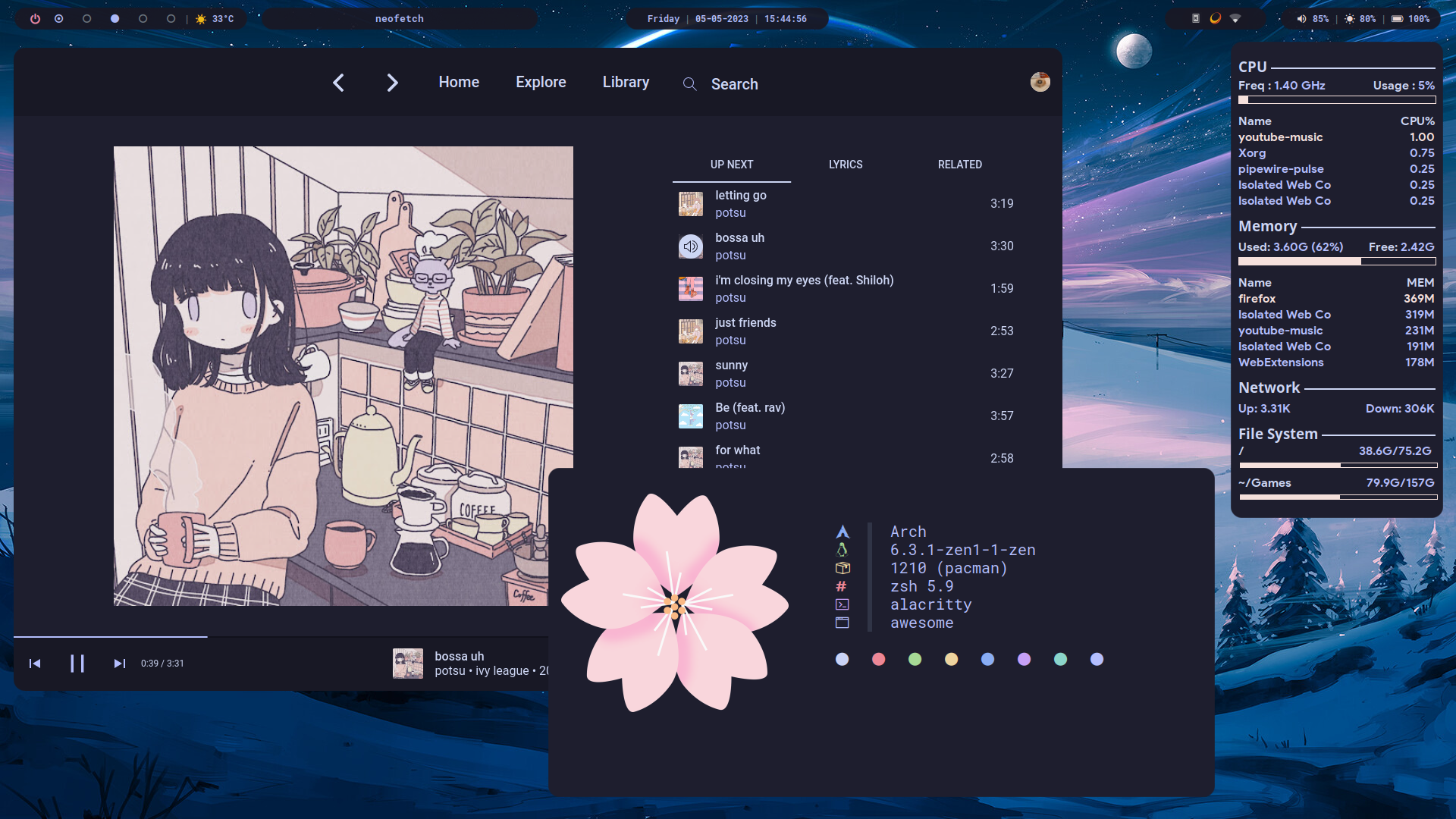Introduction
Linux ricing, a term that draws parallels from the car tuning world, is the practice of customizing and optimizing the appearance and performance of a Linux desktop environment. Much like car enthusiasts who modify their vehicles to reflect personal style and enhance performance, Linux users engage in ricing to create a desktop environment that is uniquely their own. This art form combines technical skill, creativity, and a passion for open-source software.
Why Rice Your Linux Desktop?
There are tons of motivations for ricing your linux environment:
- Aesthetic: Personalizing the look and feel of the desktop to make it visually pleasing.
- Efficiency: Enhancing the usability and performance of the system according to individual needs.
- Learning: Gaining a deeper understanding of how Linux and its components work.
- Community and Sharing: Showcasing unique setups and learning from others in the ricing community.
Getting Started
Choosing a Base System
Before diving into ricing, it's essential to choose a Linux distribution that supports extensive customization. Popular choices include:
- Arch Linux: Known for its simplicity and flexibility, Arch is a favorite among linux veterans and virgins. (I use arch btw)
- Manjaro: A user-friendly, Arch-based distribution for people with a life.
- Ubuntu: Super beginner-friendly distribution, not so popular for veterans because of snap, for beginner who just wants it to just work.
Selecting a Desktop Environment or Window Manager
The choice of desktop environment (DE) or window manager (WM) significantly influences the ricing process. Here are some popular options:
- Desktop Environments: GNOME, KDE Plasma, XFCE, and Cinnamon are DEs that offer varying levels of customization.
- Window Managers: i3, bspwm, dwm, qtile, awesome, and hyprland(compositor and wm) are lightweight WMs favored by advanced users for their minimalism and configurability.
Key Components of Ricing
Themes and Icons
Custom themes and icon packs are fundamental to ricing. Websites like GNOME-Look and Pling offer a plethora of options. Tools like lxappearance and qt5ct can help manage themes for GTK and Qt applications.
Compositors
Compositors enhances the visual experience by providing effects like shadows, transparency, and animations. Popular compositors include:
- Compton/Picom: Lightweight compositors suitable for minimal WMs.
- KWin: The compositor used by KDE Plasma, offering extensive effects and configurations.
Conky
Conky is a highly configurable system monitor that displays information on your desktop. It can show anything from system stats to weather updates, and it can be styled to blend seamlessly with your desktop theme.
Bars and Widgets
For window managers, bars like polybar and lemonbar are essential for displaying information and launching applications. Widgets and applets can also enhance functionality and aesthetics.
Terminal Emulators
A terminal emulator must be simple, functional, and configurable. Terminal emulators like Alacritty, Kitty, and Wezterm offer high customization potential.
Fonts
Fonts are a subtle yet crucial element. Choosing the right fonts for your terminal, status bar, and system can significantly impact the overall look. Websites like Nerd Fonts provide a wide range of options. Nerd fonts are fonts that are patched to include icons.
Process of ricing linux
These are the steps most ricers take to rice their desktop:
- Install a Base System: Start with a minimal install of your chosen Linux distribution.
- Set Up a Window Manager: Install and configure a lightweight window manager like i3. Edit the configuration file (
~/.config/i3/config) to set keybindings and behaviors. - Apply a Theme: Download a GTK theme and set it using
lxappearance. Similarly, choose and apply an icon theme. - Configure the Terminal: Edit your terminal's configuration file (e.g.,
~/.config/alacritty/alacritty.ymlfor Alacritty) to set colors, fonts, and other preferences. - Add a Compositor: Install and configure Picom to enable transparency and shadows. Example configuration can be placed in
~/.config/picom/picom.conf. - Set Up Conky: Install Conky and create a configuration file (
~/.config/conky/conky.conf) to display system information on your desktop. (optional) - Customize the Bar: Install Polybar and configure it to display essential information. Configuration files typically reside in
~/.config/polybar/.
Sharing and Inspiration
The ricing community is vibrant and always willing to share and inspire. Websites like Reddit’s r/unixporn are great places to showcase your setup and get inspired by others' work. You can also find configuration files and dotfiles on repositories like GitHub and GitLab.
Conclusion
Linux ricing is more than just making your desktop look good; it's about creating a personalized, efficient, and satisfying computing environment. It encourages exploration, learning, and community engagement. Whether you are a seasoned Linux user or a newcomer, ricing offers endless possibilities to express your creativity and enhance your computing experience.
Happy ricing!
